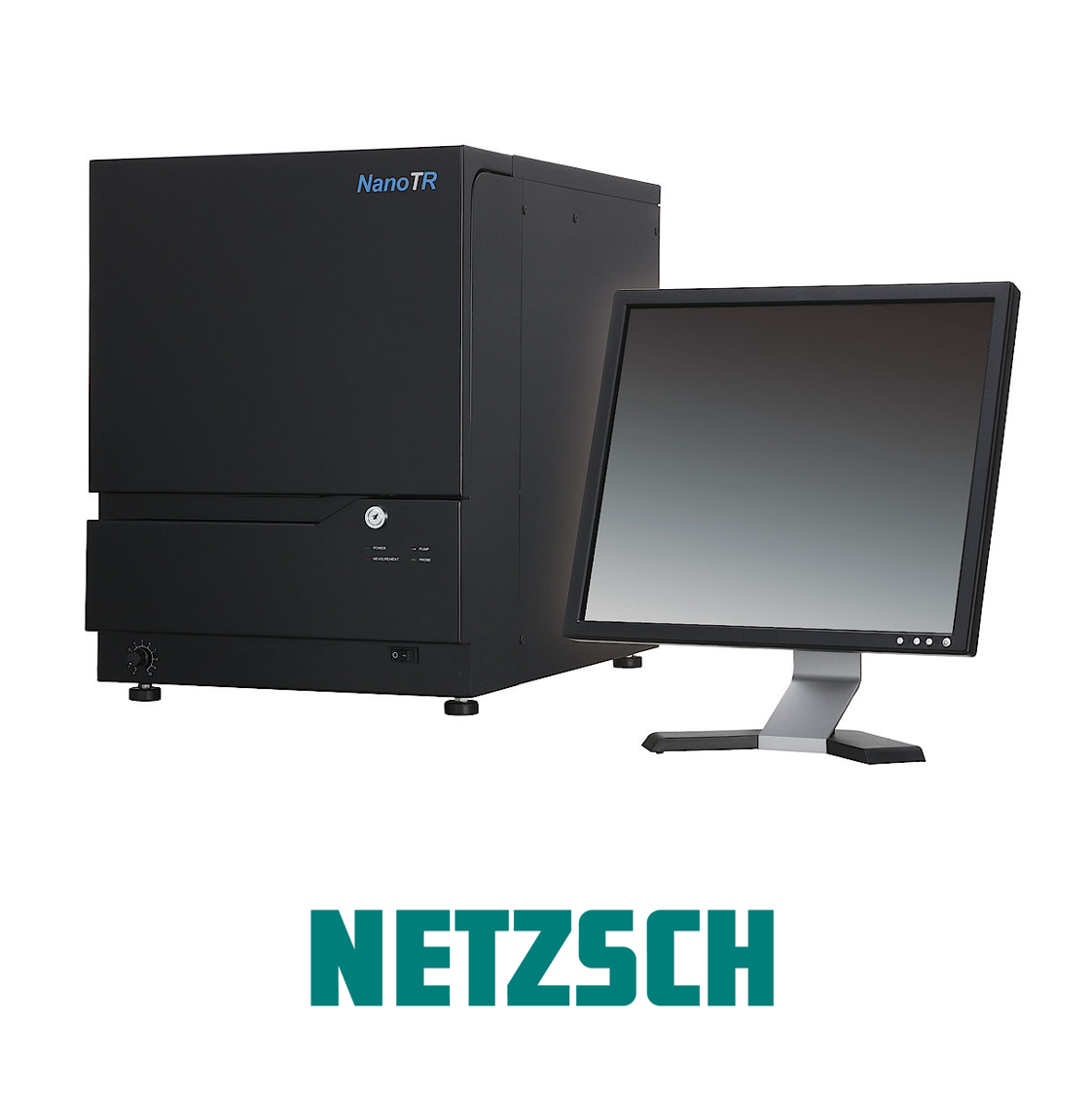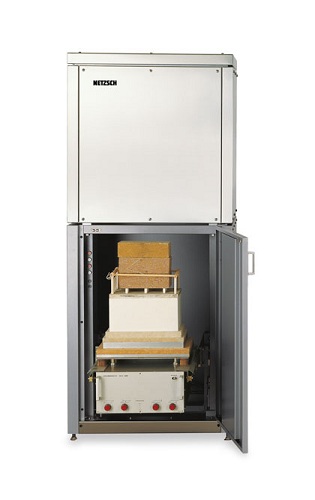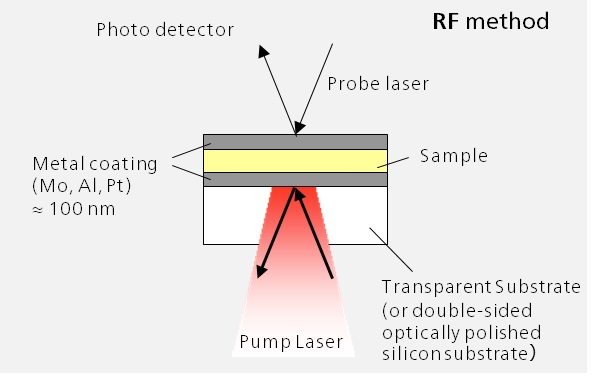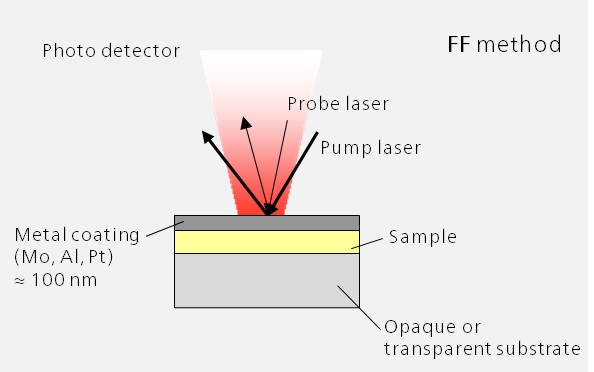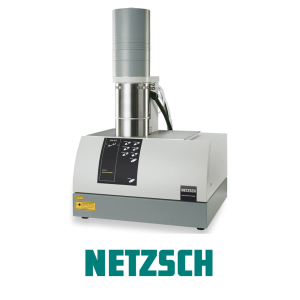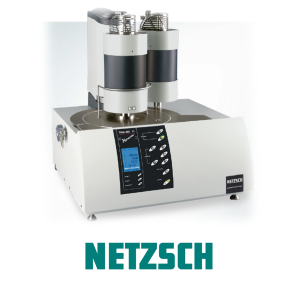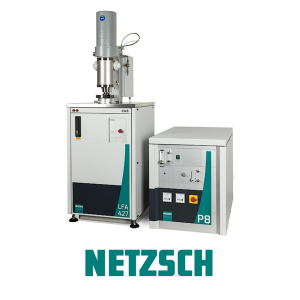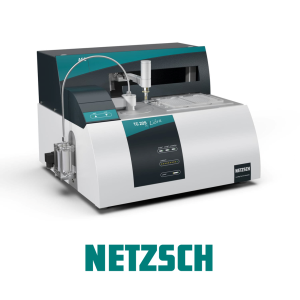תיאור
Laser Flash Method –
The Most Established Method for the Determination of Thermal Diffusivity
In modern industries, the knowledge of thermal properties, specifically thermophysical properties, becomes more and more important. They are required, for example, for the development of heat release materials of advanced and miniaturized electronics, thermoelectric materials as sustainable energy, insulating materials for saving energy, TBCs (thermal barrier coatings) for turbine blades, and safety operation of nuclear plants, etc.
Among the thermophysical properties, the thermal conductivity is of paramount importance. The determination of the thermal diffusivity/thermal conductivity can be realized with the established laser flash method (LFA). This method has been known for many years to provide reliable and accurate results. Sample thicknesses typically range from 50 μm to 10 mm.
NETZSCH is a world-wide leading manufacturer of instruments for testing thermophysical properties, specifically of laser flash analyzers. These LFA systems are used in the fields of ceramics, metals, polymers, nuclear research, etc.
Thermoreflectance –
The Method for the Determination of Thermal Diffusivity in the Thickness Range of Nanometer
With the significant progress in the design of electronic devices and the associated need for an efficient thermal management, accurate thermal diffusivity / thermal conductivity measurements in the nanometer range are more than ever crucial.
The National Institute of Advanced Industrial Science and Technology (AIST), Japan, already responded to industrial requirements with the development of a “pulsed light heating thermoreflectance method” in the early 90’s. PicoTherm Corporation was established in 2008 with the launch of a nano-second thermoreflectance apparatus “NanoTR” and a pico-second thermoreflectance apparatus “PicoTR”, which allows for absolute measurements of the thermal diffusivity of thin films in a thickness range of several 10 μm down into the nanometer range.
In 2014, NETZSCH Japan K.K, a subsidiary of NETZSCH, became the exclusive representative of the PicoTherm Corporation. In combination with our LFA systems, NETZSCH can now offer the solution for thin films in the nanometer range up to bulk materials in the range of mm.
Why measuring thin films?
Thermal Properties of Thin Films are Different from that of Bulk Materials
The thicknesses of nanometer-thin films are often less than the typical grain size. Consequently, their thermophysical properties differ significantly from the bulk material.
Ultrafast Laser Flash Method –
Rear Heating/Front Detection (RF)
Determination of Thermal Diffusivity and Interfacial Thermal Resistance

The fact that the thermophysical properties of thin layers and films differ considerably from those of the corresponding bulk material requires a technique which overcomes the limitations of the classical laser flash method (LFA). This so-called ultrafast laser flash technique is also known as the rear heating/front detection method.
The measurement setup is similar to the conventional LFA: detector and laser are on opposite sides of the sample which is located on a transparent substrate. The measured thermal diffusivity is the component through the thickness perpendicular to the sample’s surface. The pump laser irradiates the sample’s rear side.
As the sample heats up, its surface thermoreflectance varies. The thermal diffusivity is calculated from the temperature rise (lower plot). Here, the thermal diffusivity of a thin metal film (Mo) was determined to 1.59 • 10-5m2/s.
Time Domain Thermoreflectance –
Front Heating/Front Detection (FF)
Determination of Thermal Diffusivity and Thermal Effusivity

In addition to the RF method, measurements can also be made in a front heating/front detection (FF) configuration. The term “front” refers to the open surface of the thin film deposited on a substrate, while “rear” refers to the boundary between the thin film and the substrate.
In the FF measurement setup (upper picture), the detector and laser are on the same side of the sample. An area of the front face of the thin film with a diameter of several tens of micrometers is heated by a pump laser, and a probe laser points at the same position. The change in the surface temperature is observed.
This method can be applied to thin layers on non-transparent substrates for which the RF technique is not suitable.
In the example on the left, the thermal diffusivity of a thin metal film (Mo) was determined to 1.61 • 10-5 m2/s by applying the FF method. The results prove the high agreement between RF and FF modes (deviation < 2%).
Technical Specification
| NanoTR | PicoTR | ||
|---|---|---|---|
| Pump Laser | Pulse width Wave length Beam diameter |
1 ns 1550 nm 100 μm |
0.5 ps 1550 nm 45 μm |
| Probe Laser |
Pulse width |
contiuous 785 nm 50 μm |
0.5 ps 775 nm 25 μm |
| Measurement items | Thermal diffusivity and effusivity, interfacial resistance | ||
|
Sample Film Thickness |
Resin Ceramics Metal |
30 nm … 2 μm 300 nm … 5 μm 1 μm … 20 μm |
10 nm … 100 nm 10 nm … 300 nm 100 nm … 900 nm |
|
Sample Film Thickness |
Thicker than 1 μm | Thicker than 100 nm | |
| Substrate |
Material |
Opaque/Transparent 10 … 20 mm square 1 mm max. |
|
| Thermal diffusivity | Range | 0.01 … 1000 mm²/s | |
| Accuracy | ± 6.2% with 40 min measurement time, for CRM 5808A in RF Mode, 400 nm thickness | ||
| Repeatability | ± 5% | ||
| Software | Calculation of thermal properties, multilayer analysis, database | ||


